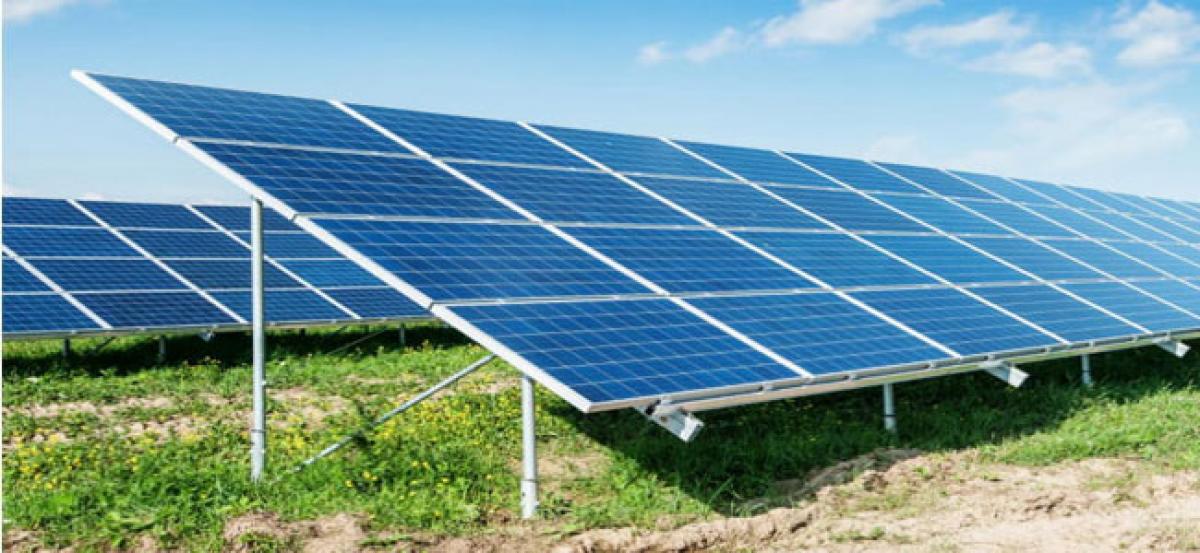Live
- ‘Bangaru Balotsavalu’ launched
- Army officer, fiancee appear before judicial panel
- AP govt to use geotagging to provide better, speedy services to people
- Law to curb unfair practices in recruitment exams
- Telugu People Foundation members call on Pawan Kalyan
- Surekha has big plans to develop Vemulawada temple
- SRKR student to attend conference at Harvard College
- Muthoot Exim launches Gold Point Centre in Guntur
- Saibaba students advance to National Science Exhibition
- DCA raids unlicensed medical shops, seizes drugs
Just In

Scientists have designed a new solar cell that converts direct sunlight to electricity with 44.5 per cent efficiency, and may potentially be the most efficient solar cell in the world.
Washington : Scientists have designed a new solar cell that converts direct sunlight to electricity with 44.5 per cent efficiency, and may potentially be the most efficient solar cell in the world.
The prototype integrates multiple cells stacked into a single device capable of capturing nearly all of the energy in the solar spectrum, researchers said. The approach developed by researchers at George Washington University (GWU) in the US is different from the solar panels one might commonly see on rooftops or in fields.
The new device uses concentrator photovoltaic (CPV) panels that employ lenses to concentrate sunlight onto tiny, micro-scale solar cells. Due to their small size - less than one millimetre square - solar cells utilising more sophisticated materials can be developed cost effectively, researchers said.
The stacked cell acts almost like a sieve for sunlight, with the specialised materials in each layer absorbing the energy of a specific set of wavelengths. By the time the light is funnelled through the stack, just under half of the available energy has been converted into electricity.
By comparison, the most common solar cell today converts only a quarter of the available energy into electricity. "Around 99 per cent of the power contained in direct sunlight reaching the surface of Earth falls between wavelengths of 250 nanometres (nm) and 2,500 nm, but conventional materials for high-efficiency multi-junction solar cells cannot capture this entire spectral range," said Matthew Lumb, lead author of the study published in the journal Advanced Energy Materials.
"Our new device is able to unlock the energy stored in the long-wavelength photons, which are lost in conventional solar cells, and therefore provides a pathway to realising the ultimate multi-junction solar cell," said Lumb.
While scientists have worked towards more efficient solar cells for years, this approach has two novel aspects. First, it uses a family of materials based on gallium antimonide (GaSb) substrates, which are usually found in applications for infra-red lasers and photodetectors.

© 2024 Hyderabad Media House Limited/The Hans India. All rights reserved. Powered by hocalwire.com







